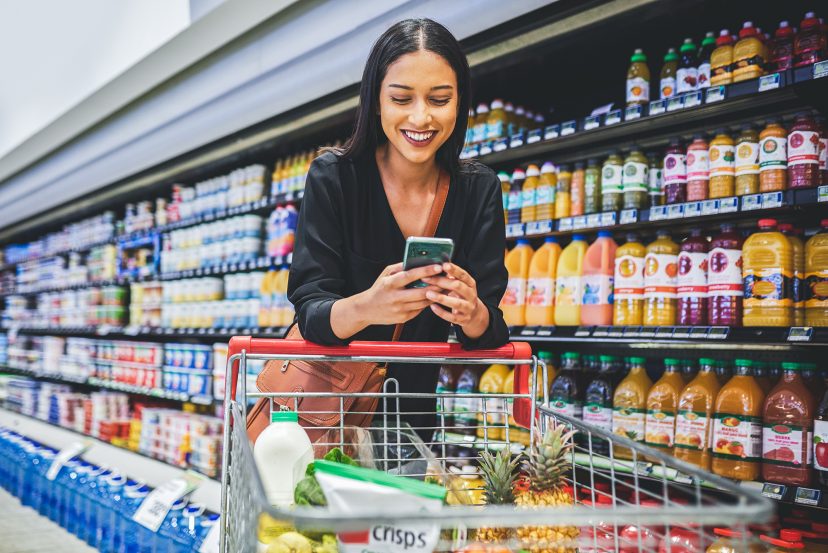
News & Resources
What does 5G mean for the modern retailer?

What does 5G mean for the modern retailer?
Imagine this: you walk into a fancy, big-box electronics retailer, excited to buy your next major purchase. You are approached by a salesperson who doesn’t know what you want and therefore isn’t sure how to help you pick out your dream purchase. You both try to look up the product information on the website. The phone connectivity is slow and you have no time to enter your personal details to access store WiFi. This experience sounds familiar, right? And it’s one that leaves you less than satisfied with the retailer.
Now imagine this: you go to that same fancy store, but the salesperson knows your needs before you even walk in the door. Timely analytics and better connectivity enabled by 5G allow this salesperson to have the right information about you at the right time. He can now understand your purpose for visiting the store the moment your car arrives in the parking lot.
Retail is no stranger to disruption. Mobile apps and, before that, the rise of online shopping itself fundamentally changed how people shopped for goods and services. Retailers have had to be at the forefront of technology changes in their efforts to keep up with shopper demands. Consumers want to be able to shop anytime from anywhere, and retailers need the ability to respond to their customers – however, whenever and wherever they want to shop.
With the advent of 5G, the retail industry is again poised for massive change.
Is 5G the end of retail as we know it?
Almost since the day the first web store went online, pundits have predicted the demise of box stores. Whether brick-and-mortar or online, retailers who have been willing to transform their businesses have continued to thrive. Today’s customers are increasingly mobile and expect contextual engagement. While retailers are working to provide seamless shopping experiences, they are simultaneously facing competitor challenges and increased security threats on a global scale.
5G offers a number of benefits such as faster speeds, lower latency, and improved connectivity. Although most tend to focus on the speed improvement, low latency can be just as important for applications such as in-store video.
Two key areas that will be affected by 5G are customer experience and the retail supply chain.
5G will bring customer experiences that go beyond store walls
When you go into a store, the experience is often not much different than it was fifty years ago. You walk in, browse items, select what you want to purchase, and check out. But 5G has the potential to take the shopping experience beyond the four walls of the store. Retailers can now engage with customers before and after their visit to the store. 5G will enable greater location accuracy inside the store so you can quickly find items and be targeted for promotions.
Today, people are used to being connected all the time, but 5G will take interactions to the next level. With better connectivity, a business will be able to understand what their customers are doing and what they want. For example, a store could use sensors in tags to identify what you’re trying on in real-time. They could then offer similar options or provide post-transaction offers based on your preferences for a more personalized experience.
The low-latency features of 5G also make video chat viable. A customer could access a video assistant to direct them to the exact location of an item rather than wasting time searching the store for a salesperson who may not know where the item is located.
Improving the retail supply chain with 5G
There’s an old saying, “you can’t sell what you don’t have”. Whenever an item is out of stock, a customer can’t buy it, so retailers not only lose the revenue from that item but potentially the shopping trip’s entire basket, as well. With 5G, retailers can gain more visibility into their supply chains and keep their shelves stocked with what customers desire. 5G-enabled sensors can be used in many areas of the manufacturing and distribution process, such as on:
- Individual food item so retailers can track where it was grown, where and when it was produced, and the stops it made on the way to the retail outlet
- Cases, pallets, trucks, and equipment in distribution centers to collect data about inventory in the supply chain, including in and between locations that do not belong to the retailers
- Shelves to help determine shopper-traffic flows and when stock is low or depleted
All of this sensor data can give retailers unprecedented real-time insights into their inventory so they know where everything is at all times.
5G has the potential to change how goods and services are exchanged in fundamental ways, both for consumers and retailers. Just as the internet and mobile devices changed many aspects of how people now shop, 5G is likely to spawn a wide range of services and capabilities that will further transform retail for both sellers and buyers.